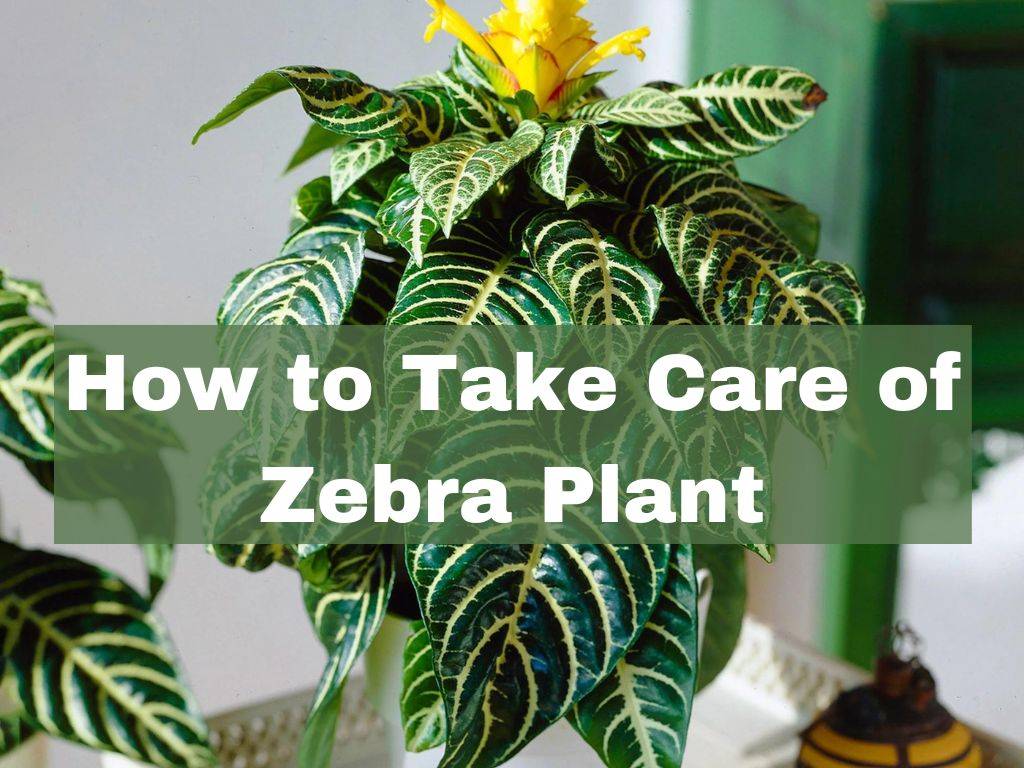
The Zebra plant, typically grown indoors is well-known for its distinctive dark green leaves with white veins. The plants vibrant blossoms are its crowning glory. A zebra plant produces tall, golden bracts, which often occur in late summer or early fall and can reach several inches in length, ranging from two to four per plant and can last up to six weeks when in bloom. The indoor zebra plant grows slowly, maturing in three years to a height of a few feet.
General Description About the Plant:
|
Common Name |
Zebra plant |
|
Botanical Name |
Aphelandra squarrosa |
|
Family |
Acanthaceae |
|
Plant Type |
Annual |
|
Mature Size |
1–6 ft. tall, 1–5 ft. wide |
|
Sun Exposure |
Partial |
|
Soil Type |
Moist |
|
Soil pH |
Neutral, acidic |
|
Bloom Time |
Summer, fall |
|
Flower Color |
Yellow |
|
Hardiness Zones |
11-12 (USDA) |
|
Native Area |
Brazil |
Zebra Plant Care:
The zebra plant, is a lovely but little tricky to manage. If you're ready to take caring of this hardy plant then start by selecting a location that has a temperature over 60 degrees Fahrenheit and a somewhat higher humidity level (60 to 70%).
Keep the plant continuously wet and in bright, filtered light (avoid direct sunshine). Keep a watch out for its distinctive yellow bract, which will blossom in late summer or early fall, and emphasize its graphically striped leaves with an equally proportional container.
Let's get to know in detail how we can exactly care for this indoor plant.
Light
Since zebra plants are accustomed to growing beneath a canopy of trees in warm and humid settings, they do best in indirect light or partial shade. While total shadow can prevent your plant from blooming, direct sunlight can burn the foliage and hence should be avoided.
Soil
Acidic to neutral soil is ideal for zebra plant growth. For a zebra plant, a multipurpose potting blend of soil is sufficient; you can add sand to the mixture to make sure it drains well. If you want a blooming plant, fertilize it every one to two weeks during the growth season (spring and summer).
Water
Zebra plants grow well in wet soil. It also requires some skill because over-watering can make the leaves wilt. Every few weeks (or when you see the soil drying up), water your zebra plant to saturation, allowing the water to thoroughly permeate the soil until it flows out of the container's drainage holes.
Temperature and Humidity
Zebra plant thrives best in temperatures of 65°F and above. Avoid low and sudden temperature swings. A high humidity of 60–70% is necessary for your zebra plant. This indoor plant won't survive in conditions with low humidity because the leaf margins will turn brown and new leaves might not form correctly.
Fertilizer
When it comes to the zebra plant's capacity to blossom, fertilizer application may be quite advantageous to development. The zebra plant should be fertilized every one to two weeks throughout its peak growth season (usually spring and early summer) with a fertilizer that is suitable for both leaves and blooms.
Pests Management
These plants might become damaged by insects such as mealybugs, spider mites, whiteflies, and aphids. Cleaning the leaves and stems with insecticidal soap or misting them with neem oil can help to get rid of the infestation.
Common Issues with Zebra Plants
There will inevitably be some problems with the leaves of such a lovely but delicate plant. Watch the leaves carefully so you can provide your zebra plant with the love and attention it needs to survive.
Leave Fall
If the leaves start to fall off, it can be due to overwatering or underwatering. When this is the issue, the lowest leaf tips on the plant will start to wilt. If the problem is not resolved then leaves will continue to fall. The fact that the air around the plant is too dry and needs additional humidity, could also be another issue.
Curling of the leaves
If the plant is receiving too much direct sunlight or is overheated then the leaves can be seen curling or crinkling. Although it enjoys light, it could be a little too hot or intense. The plant should be moved to a place with light that is not as direct or bright.
Browning of Leaf Tips
Too much sunshine or fertilizer are the two main causes of the browning of the leaf tips. Simply relocate the plant to a location with less direct sunlight and reduce fertilization.











